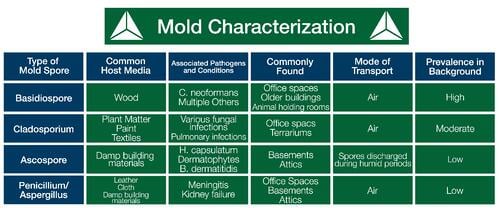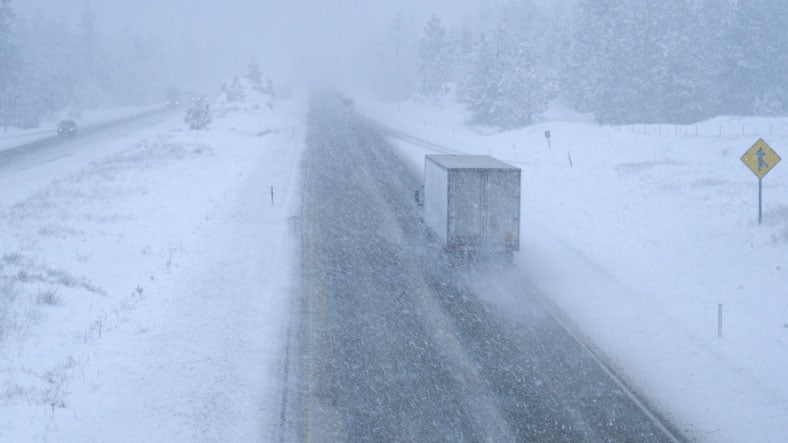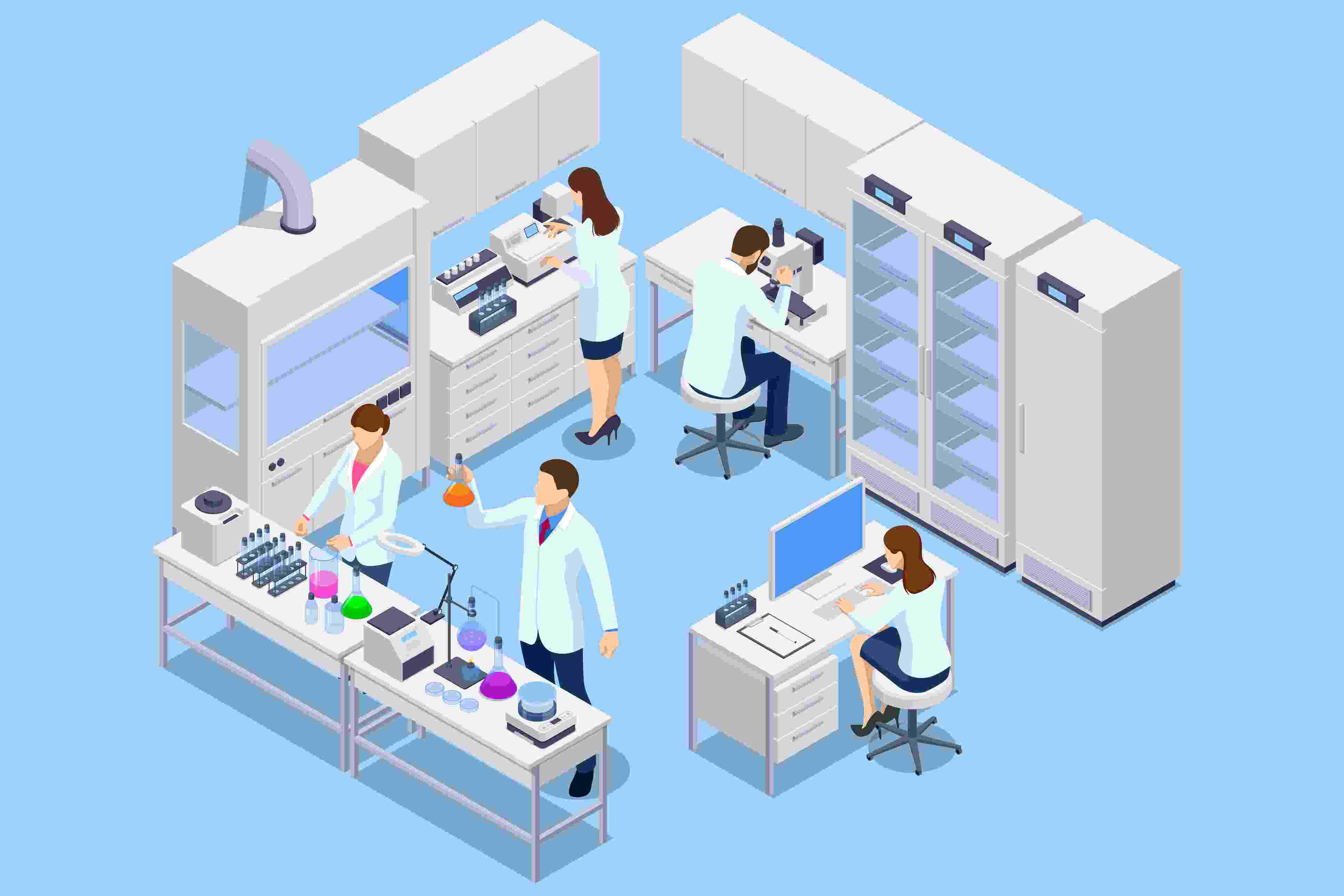You Might Have Mold: 4 Most Common Lab Molds and Where They Live
It’s not uncommon to group molds into very broad categories like “common mold” or “black mold”. This fails to address the reality that molds come in a variety of shapes, sizes, and pathogenic qualities. This failure to address the differences in molds or even recognize that you might have mold can result in failure to properly treat them via removal or professional mold remediation. For this reason it’s important to have a working knowledge of the different types of molds, where they are found, and how benign or dangerous they are.
If you think you might have mold but are unsure, download this pre-assessment checklist.
Click here for a larger version of the mold characterization table below.
Here are four common examples:
Basidiospores
Basidiospores can be found anywhere and spread via wind. Concentrations are typically high in the background, as non-dangerous basidiospores are common outdoors. One common pathogen that is often grouped with the basidiospores is C. neoformans. C. neoformans can be found in pigeon feces as well as injection or necropsy of lab animals.
Infection is usually the result of a cut while dealing with the culture using sharp objects, but since so many different pathogens and microorganisms have basidiospore life stages, different modes of infection are possible, like by breathing in spores. Inhalation of basidiospores can have health effects ranging from pneumonia-like symptoms to cryptococcus meningitis if the infection isn’t treated before it spreads to the brain.
Cladosporium
The list of environments in which this class of molds thrives is extensive. Sources everything from old fruit to damp acrylic painted walls. These types of mold are perhaps most commonly found in textiles, carpeting, and paint. After a colony has developed, this mold will take the form of dark green, gray, or black circles, maybe even with some fuzz on the perimeter.
Take extra care when looking for these molds in a terrarium, as it can easily grow on cellulose surfaces. Construction could also kick up cladosporium into the air, and subsequently into your lungs, as the spores are often found in water-damaged building materials. If this happens, cladosporium can start infecting the eyes, skin, and respiratory tracts of anyone in the building.
Ascospores
Many different pathogens can become ascospores when they reproduce, so the distribution of these contaminants can vary greatly. In general, ascospores grow indoors on damp substrates. One big group of these pathogens is the Dermatophytes, which can attack and eat away the skin and keratin-based structures in animals and humans, such as the hair and nails. One example of this phenomenon is A. benhamiae, which has been known to cause skin infections that are very difficult to treat.
These pathogens are typically spread by infected lab animals. Another important pathogen in the ascospore group is Histoplasma capsulatum, which reproduces sexually as an ascomycete with infectious ascospores. This pathogen is important to note because it is resistant to drying and can remain viable for long periods of time. This means that simply mopping up a wet area might not be enough to remediate this threat to human health.
Penicillium/Aspergillus
Penicillium can be found in many places. It often lives in water-damaged building materials in high concentrations. Colonies that form from Penicillium are typically round and have a light or dark ring around the edge of the circle. While not much is known about the effects of penicillium alone, there is some evidence that points to kidney failure as a possible result of prolonged exposure to this type of mold, and Penicillium marneffei specifically has been observed as potentially lethal in immune-compromised individuals.
Aspergillus is a fairly broad group of molds and the water needs of these various types can vary. In general, aspergillus grows commonly in high humidity environments and especially on leather and textiles i.e. surfaces that are often found in office spaces. It should be noted that aspergillus spores themselves do not need humidity to survive, meaning they can be lurking even in a bone-dry office space or lab. Aspergillus is thought to have a natural habitat in compost piles and hay bales, as well. Aspergillus is the type of mold behind the infamous NECC meningitis outbreak of 2012, and is therefore high on the watch list of many environmental compliance companies.
Interested in learning more? Download our Quick & Easy Mold Remediation Guide to learn how to perform a safe and successful mold remediation on your facility. Contact us to learn more about our Remediation Services.







